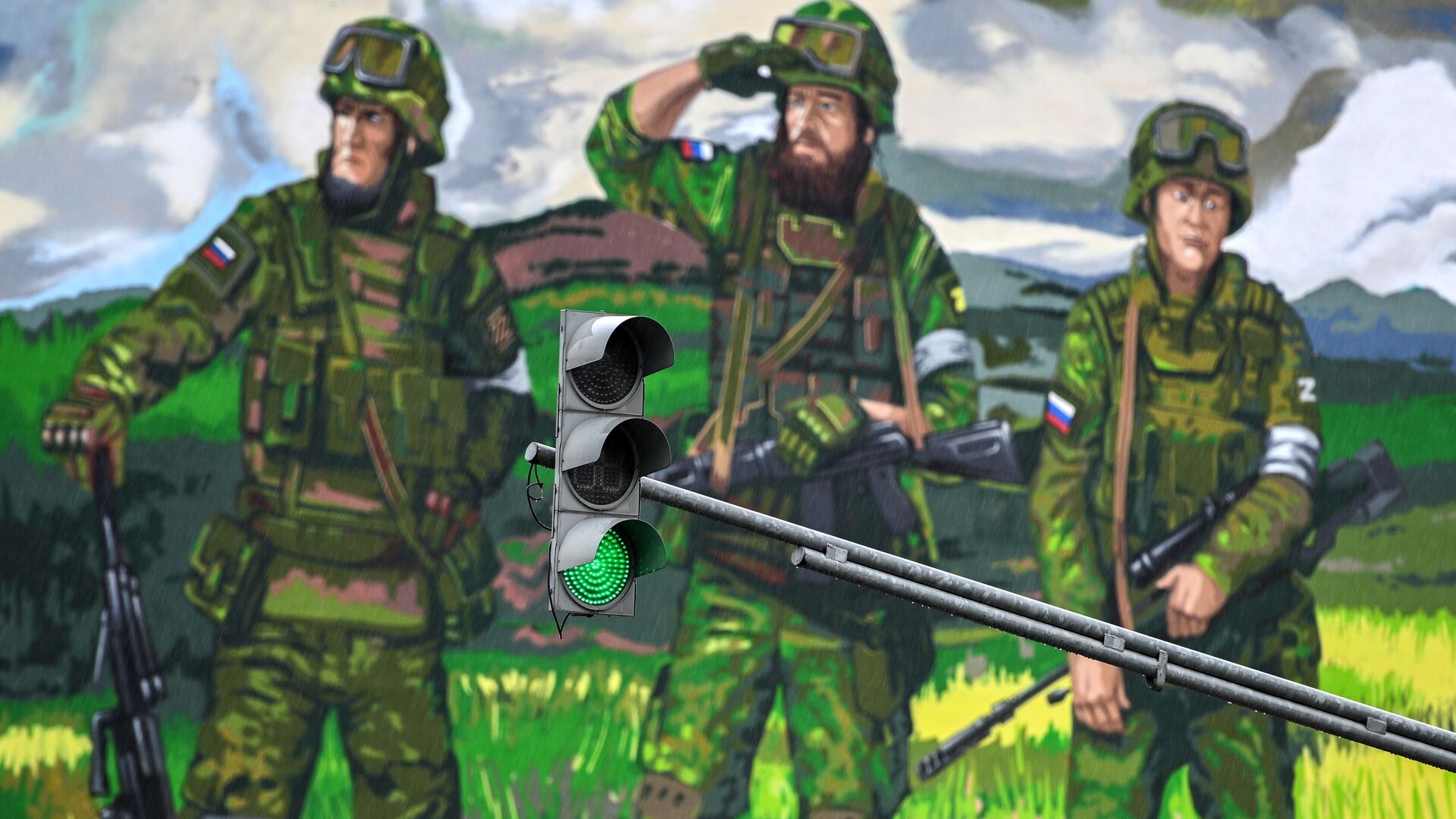What Lies Behind Ukraine Crisis & Russia's Spec Military Op
08:20 13.12.2022 (Updated: 12:03 13.12.2022)

© Sputnik / Ramil Sitdikov
/ Subscribe
On February 24, Russia launched a special military operation in Ukraine in order to de-militarize and de-Nazify the country. By then, the Kiev regime had been regularly launching attacks against the Donbass region — primarily of the Russian-speaking population.
Donbass is a historical coal-mining region and is now defined as the Lugansk and Donetsk People's Republics, which have officially joined Russia as a result of referenda in a similar fashion to the Kherson and Zaporozhye regions.
To debunk claims of bias and inconsistencies, Sputnik invites you to take an in-depth look into the reasons and development of the Ukraine crisis.
What Happened in Ukraine in 2014?
Contrary to what western media have been perpetuating, the conflict in Ukraine started long before February 2022.
After Russian diplomats succeeded in averting Ukraine's bid to join NATO in 2008, former Ukrainian leader Viktor Yanukovich adopted a course to maintain the country's non-aligned status.
The outbreak of the Euromaidan protests in 2014 followed Yanukovich's postponement of the inking of the Ukraine–European Union Association Agreement that could have paved the way for Ukraine to enter the bloc. His move drew the ire of Europe-leaning Ukrainians. Massive protests later grew into outright confrontations between the government and the opposition. As a result, Yanukovich was forced to flee the country under pressure from western states and a pro-western government was formed in Kiev.
The new government, which clearly took up an aggressive nationalist rhetoric driven by support from its western allies, was not accepted by the citizens of Donbass -- the predominantly Russian-speaking southeast of Ukraine. Following the coup, Donbass residents demanded greater autonomy for their regions, with the Lugansk and Donetsk People’s Republics in Donbass declaring their independence.
Two months after the coup, Kiev unleashed a large-scale offensive on these territories, which continued for eight years up to February 2022. There is evidence of Azov members - a neo-Nazi Ukrainian battalion that engaged in hostilities against the people of Donbass - committing war crimes, including kidnapping, torture and mass looting, the Office of the UN High Commissioner for Human Rights (OHCHR) reported in 2016. The battalion has been one of the primary tools used by the Kiev government in its crackdown against anti-Maidan protesters who opposed the US-backed coup in Ukraine.
It’s worth mentioning that Kiev continued its attacks in violation of the Minsk agreements signed by Ukraine in 2015 which were aimed at settling the armed conflict in Eastern Ukraine. The Ukrainian government chose to ignore the declared principles and, what's more, sabotaged the adoption of the special status of the Lugansk and Donetsk People’s Republics.
At the same time, another major event took place in 2014 – the reunification of Crimea with Russia – a peninsula on the northern coast of the Black Sea, where citizens overwhelmingly decided to become part of Russia -- again.
The joining happened as a result of a referendum, contrary to western politicians and media claims of “annexation”. This historical event also took place in the backdrop of the Ukrainian government providing no opportunities for economic and cultural development to the peninsula and even amid suggestions that it planned to withdraw Crimea’s autonomy.
Why Russia Launched a Special Military Op in February'22
In December 2021, the Russian Foreign Ministry published draft treaties between Russia and the US and NATO on security guarantees. According to the proposal, NATO should not expand to the east, had to withdraw its weapons to 1997 positions and avoid deploying weapons near the Russian border. The US and NATO did not agree the conditions suggested by Russia and as a result, Russia had to start the special military op to protect the country’s sovereignty and stop NATO’s eastward expansion.
Right after the beginning of the special military op, dozens of western companies withdrew from Russia as a sign of protest. Among them were big firms including IKEA, H&M, Bershka, world-famous fast food café McDonald’s, computer manufacturing companies Apple, Dell, and so on.
In addition, Russians were banned from entering the US and European Countries unless they have a serious reason like medical treatment or family issues.
Despite expectations, the ensuing western sanctions mostly affect the West itself and the so-called “Global South” due to disruptions in supply chains, shortages in the market and a further rise in oil prices, with Brent crude surging to $100-$110 a barrel before the end of the year.
Among the most recent developments is the price cap imposed on Russian oil by G7 states.
How It Impacted Indo-Russia Ties
Despite the expectations of the US and its multiple attempts to draw Delhi to its side, India has maintained a balanced attitude to events and, what's more, refused to join the price cap on Russian oil.
India purchased nearly 40 percent of Russian Urals-grade oil transported through seaborne routes in November, becoming the biggest global importer of Russian seaborne crude, according to US financial market data firm Refinitiv.
Furthermore, India’s Foreign Minister Subrahmanyam Jaishankar has visited Russia and called the country “a reliable and time-proven partner”, explaining that “India is interested in stable relations with Russia in terms of oil supplies” during the meeting with his Russian counterpart Sergey Lavrov.
In addition, India and Russia maintain active cooperation in the cultural sphere and in military ties, continuing to develop projects such as the construction of the Joint Russian-Indian BrahMos Supersonic Extended Range Cruise Missile as well as the manufacturing of AK-203 assault rifles by an Indo-Russian joint venture.
